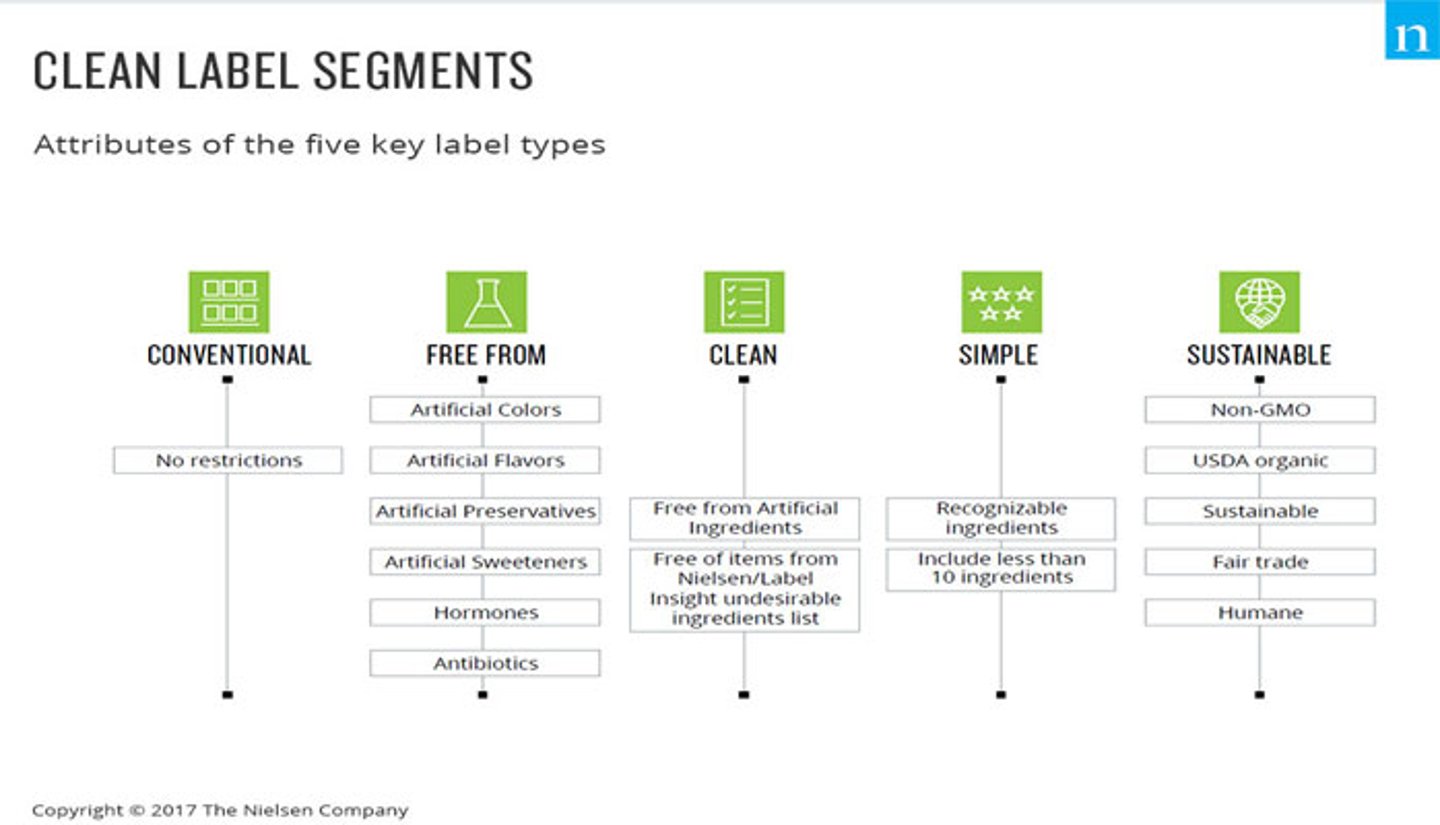'Clean Label' Has Gone Mainstream, But What Exactly Does It Mean?
NEW YORK — With consumers focusing now more than ever on transparency, claims like “natural,” “organic,” “gluten free” and “clean label” have become mainstream, but what exactly do these labels mean?
The latest research from Nielsen and Label Insight, its strategic partner and product data company, “clean label” hinges on consumers’ desire for labels that are easy to read and contain simple ingredients. However, despite the growing use of the term “clean” to describe products across the fast-moving consumer goods space, there is no universally accepted definition of what constitutes a clean product.
To provide analytical rigor to the term and how labels such as these affect sales, Nielsen and Label Insight created a progressive scale that describes the attributes within the clean arena.
According to Nielsen and Label Insight’s findings, sales of products that make organic claims are up 10 percent from one year ago; sales of products that make “all natural” claims are up 7.8 percent; and sales of products that claim “no additives or artificial ingredients” are up 8 percent.
When it comes to how brands communicate its buyers, 39 percent of U.S. consumers said they would switch from the brands they currently buy to others that provide clearer, more accurate product information. Another 73 percent surveyed said they feel positively about brands that share the “why behind the buy” information about their products.
Transparency affects consumer buying, with 68 percent of consumers saying they’re willing to pay more for foods and beverages that don’t contain ingredients that they perceive are bad for them. In some cases, consumers are more interested in knowing what’s not included than what is included in the products they buy. In fact, 53 percent of consumers said the exclusion of undesirable ingredients is more important than the inclusion of beneficial ingredients.
According to Nielsen and Label Insight, manufacturers, brands and retailers will need a keen sense of current trends toward product transparency in order to deliver on evolving consumer needs. Competition for consumers seeking clarity, purity and responsibility is only going to increase.


